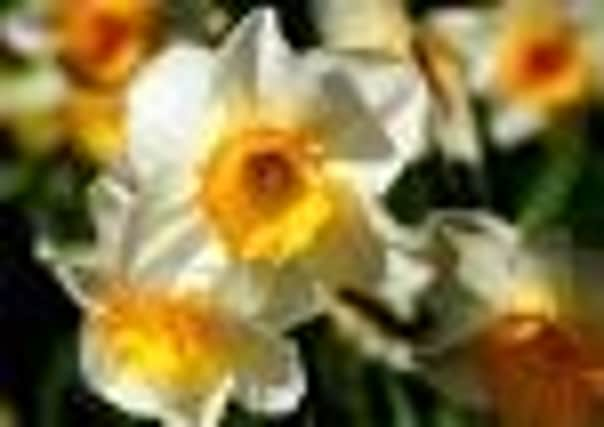The rites of Spring


So once you’ve cleared annuals and dumped them in your compost bin, prepare the soil for spring colour.
It doesn’t really matter whether you prefer daffodils to tulips or have a fancy for something more exotic – spring-flowering bulbs should be made a compulsory part of every garden, no matter how great or small.
Advertisement
Hide AdAdvertisement
Hide AdSpeaking of exotic, how about the Fox Tail Lily (Eremurus)? These bulbs need full sun but produce magnificent heads in white, yellow and pale orange that bloom through May and June.
They prefer a well-drained sun-baked soil but this can easily be achieved by digging in plenty of soil conditioner and grit to the planting hole.
Daffodils and tulips are not so fussy about soil and as long as they are fed well, they should produce flowers for years to come.
If your daffs are coming up “blind” (plenty of leaf but no flower), there are two possible reasons – one is overcrowding and the other is lack of nutrients.
Advertisement
Hide AdAdvertisement
Hide AdTo improve their chance of flowering, dig out and separate the old bulbs and replant them in a new planting hole that has been improved with a soil conditioner. Leave a gap at least 5cm (2in) wide between each bulb, fill with the improved soil and then top-dress the soil surface with a slow-release plant food such as Osmocote.
With more space and more nutrients to encourage a stronger root system, the bulbs should swell next season and be flowering size the following year.
But before writing off the end of summer and the start of autumn, spare a thought for Michaelmas daisies, which should be coming into bud about now. Their attractive purple, blue and pink daisy-like flowers are stunning, but the silvery green foliage is very prone to attack by powdery mildew.
Spray with a systemic fungicide which works internally to give protection from for several weeks; another spray at the beginning of October is usually sufficient to provide disease-free plants for the whole flowering period.